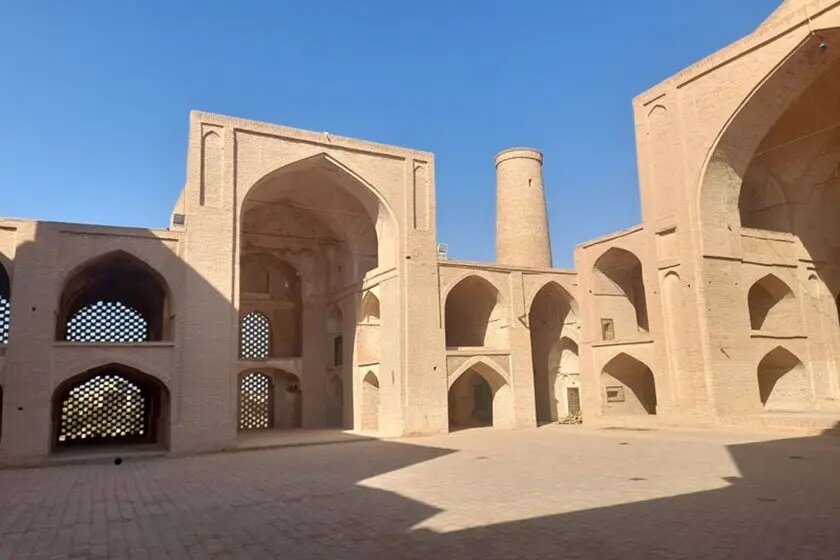Jameh Mosque of Ardestan, famed as museum of architectural styles, undergoes restoration

TEHRAN—A new restoration work has commenced on Jameh Mosque of Ardestan, an ancient place of worship in central Iran, which is famed as a museum of architectural styles.
The restoration project involves strengthening the overall structure, repairing its rooftops, and replacing its worn-out material, a local official said on Saturday.
Situated in Isfahan province, the two-story hypostyle mosque is an early Islamic building with many accretions over its long history of use. It incorporates successive architectural styles of the Sassanids, Buyids, Seljuks, and Safavids. However, most of what its visitors see dates from the Seljuk era (ca. 1040–1196).
The congregational mosque has a four-portico (iwan) courtyard surrounded by encircling arcades. However, it is part of larger premises that also include other mudbrick structures such as a cistern, a caravanserai, a marketplace, a bathhouse, and a madrasa.
According to Archnet, the earliest stucco fragments, found in the western corner of the courtyard, have been dated to the end of the 10th/4th c. AH. The interior of the dome chamber and iwan are extensively covered in plaster. The dome and zone of transition are articulated with simulated brickwork; the iwan vault is uniquely faced with a complex stucco design of interlacing arabesques. The mihrab exemplifies skilled stucco carving and may represent Mongol restoration.
The mosque stands on a site once occupied by a Sasanian structure, as evidenced by remains discovered in archaeological excavations. Its earlier structure was likely a hypostyle type, having a central courtyard surrounded by arcades. Remains of some of these arcades in the current mosque show that they were covered with barrel vaults. The mosque occupies an irregular space centered on a rectangular courtyard with four iwans, incorporating pieces of the earlier hypostyle structure.
The mosque was inscribed on the national heritage list in 1931.
AFM
Leave a Comment